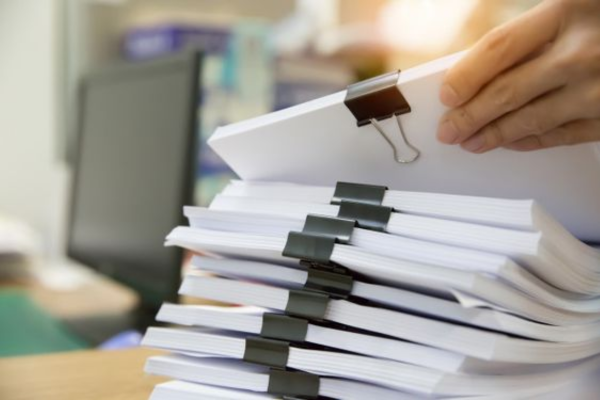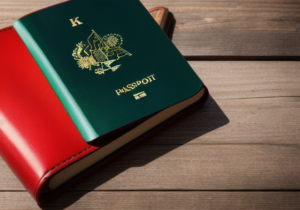Overview of Document Rectification
Document rectification is the process of correcting or updating errors in official documents. It is an essential process that ensures the accuracy and authenticity of legal documents. Different types of documents require rectification, including birth certificates, marriage certificates, and passports.
Why is document rectification important?
The accuracy and authenticity of official documents are crucial for legal and administrative purposes. Inaccurate or fraudulent documents can lead to legal and financial consequences. Document rectification ensures that documents are correct and valid, reducing the risk of legal and financial problems.
Common types of documents that require rectification
Birth certificates, marriage certificates, and passports are some of the most common documents that require rectification. Other documents that may require rectification include driver’s licenses, social security cards, and immigration documents.
The consequences of non-compliance with document rectification standards
Failure to comply with document rectification standards can result in legal and financial consequences. Inaccurate or fraudulent documents can lead to fines, imprisonment, and other legal penalties. Moreover, such documents can also result in the denial of important benefits or services, such as healthcare, education, and employment opportunities.
Overall, document rectification is an essential process that ensures the accuracy and authenticity of legal documents. It is important to comply with document rectification standards to avoid legal and financial consequences and to ensure that one’s documents are correct and valid.
Step-by-Step Guide to the Document Rectification Process
Document rectification is a crucial process that ensures that all your legal documents comply with the necessary standards and regulations. It is essential to follow a step-by-step guide to ensure that the process is efficient and accurate, and all the necessary requirements have been met.
Step 1: Identify the documents that require rectification
Before starting the process, it is crucial to identify the documents that require rectification. Common types of documents that require rectification include birth certificates, marriage certificates, academic degrees, and criminal records. It is essential to verify the requirements for each document and ensure that all information is correct and up-to-date.
Step 2: Gather the necessary information and documentation
Once you have identified the documents that require rectification, the next step is to gather all the necessary information and documentation. This may include personal identification documents, proof of residency, and any other relevant documentation required for the specific document type.
Step 3: Rectify the documents
The next step is to rectify the documents. This may involve correcting errors, updating information, or obtaining official translations. It is essential to ensure that all corrections are accurate and comply with the necessary standards and regulations.
Step 4: Submit the rectified documents
Once the documents have been rectified, the final step is to submit them to the appropriate authority. This may be a government agency, educational institution, or any other relevant entity. It is essential to ensure that all documentation has been submitted correctly and within the necessary timeframe.
Challenges and Common Errors in the Document Rectification Process
The document rectification process can be challenging and time-consuming, and there are several common errors that individuals may make.
Challenge 1: Language Barriers
One of the most significant challenges in the document rectification process is language barriers. If the documents are in a language that is not recognized by the relevant authority, official translations will be required. It is essential to ensure that translations are accurate and comply with the necessary standards.
Challenge 2: Lack of Documentation
Another common challenge is a lack of documentation. If the necessary documentation is missing, it can delay the rectification process and may result in additional fees or penalties. It is essential to ensure that all necessary documentation is gathered before beginning the process.
Best Practices for Efficient and Accurate Document Rectification
There are several best practices that individuals can follow to ensure that the document rectification process is efficient and accurate.
- Organize your documentation: Before beginning the process, ensure that all necessary documentation is organized and easily accessible.
- Research the requirements: It is essential to research the requirements for each document type and ensure that all necessary information and documentation has been gathered.
- Use reputable translation services: If official translations are required, ensure that the translation service is reputable and complies with the necessary standards.
- Double-check for accuracy: Before submitting the documents, double-check that all corrections and updates are accurate and comply with the necessary standards.
By following these best practices, individuals can ensure that the document rectification process is efficient and accurate, minimizing delays, fees, and penalties.
Conclusion
The document rectification process is a crucial step in ensuring that all legal documents comply with the necessary standards and regulations. By following a step-by-step guide, being aware of common challenges and errors, and following best practices, individuals can ensure that the process is efficient and accurate, minimizing delays, fees, and penalties.
The Role of Technology in Document Rectification
Document rectification is a complex process that involves verifying and correcting errors in official documents. While it has traditionally been a manual process, technology has played an increasingly important role in recent years. There are now several software and tools available that can assist with document rectification, making the process faster and more accurate.
Overview of Document Rectification Software and Tools
Document rectification software and tools use optical character recognition (OCR) technology, machine learning algorithms, and artificial intelligence (AI) to identify errors in official documents such as passports, birth certificates, and driver’s licenses. These tools can detect errors such as misspellings, incorrect dates, and missing information with a high degree of accuracy. They can also suggest corrections automatically or flag them for manual review by a human.
Some popular document rectification software and tools include Adobe Acrobat Pro DC, ABBYY FineReader, and Kofax Power PDF. These tools are user-friendly and offer a range of features that can streamline the document rectification process.
Advantages and Disadvantages of Using Technology in Document Rectification
One of the main advantages of using technology in document rectification is speed. Automated tools can analyze documents much faster than humans, reducing the time and resources needed to complete the rectification process. They also minimize the risk of human error and can detect errors that might be missed by a human reviewer.
However, there are also some disadvantages to using technology in document rectification. For one, the accuracy of automated tools is not always perfect, and some errors may still be missed. Additionally, some document types or languages may be more difficult to analyze with OCR technology, which can limit the effectiveness of these tools in certain cases.
Future Trends in Document Rectification Technology
As technology continues to evolve, there are several trends emerging in the document rectification space. One is the increasing use of AI and machine learning algorithms to improve the accuracy of document rectification tools. These algorithms are becoming more sophisticated and can learn from previous rectification tasks to improve their performance over time.
Another trend is the integration of document rectification tools with blockchain technology. Blockchain provides a secure and decentralized way to store and verify official documents, and integrating it with rectification tools can help ensure the accuracy and authenticity of these documents.
Overall, the role of technology in document rectification is likely to continue to expand in the coming years. While it is not a perfect solution, it offers several advantages that can help streamline the rectification process and improve its accuracy and efficiency.

Table: Popular Document Rectification Software and Tools
| Software/Tool | Features | Price |
|---|---|---|
| Adobe Acrobat Pro DC | OCR, automatic correction suggestions, document comparison | $14.99/month (annual subscription) |
| ABBYY FineReader | OCR, automatic correction suggestions, PDF editing | $199.99 (one-time purchase) |
| Kofax Power PDF | OCR, automatic correction suggestions, document conversion | $179.99 (one-time purchase) |
Legal and Regulatory Considerations
Document rectification is a critical process that requires compliance with various legal and regulatory requirements. In many countries, specific laws and regulations govern document rectification, and organizations must adhere to them to avoid legal consequences. The process involves the correction of errors, omissions, and mistakes in official documents, which can be of various types, such as birth certificates, marriage certificates, driver’s licenses, or passports.
Compliance with standards and guidelines is essential to ensure the accuracy and authenticity of the rectified documents. Organizations must follow specific procedures and protocols to maintain the integrity of the documents and avoid fraudulent activities. Compliance standards and guidelines for document rectification vary across countries, but most of them require organizations to verify the identity of the document holder, validate the authenticity of the original document, and ensure that the rectified document complies with the legal and regulatory requirements.
Non-compliance with document rectification regulations can result in severe penalties, including fines, legal action, and reputational damage. In some cases, non-compliance can even lead to criminal charges and imprisonment. Therefore, it is crucial for organizations to understand and comply with the legal and regulatory requirements for document rectification to avoid legal and financial consequences.
Legal and Regulatory Requirements
The legal and regulatory requirements for document rectification vary across countries and depend on the type of document that requires rectification. In general, organizations must comply with the following:
- Verify the identity of the document holder
- Validate the authenticity of the original document
- Ensure that the rectified document complies with the legal and regulatory requirements
- Adhere to specific procedures and protocols
Compliance Standards and Guidelines
Compliance standards and guidelines for document rectification aim to ensure the accuracy and authenticity of the rectified documents. Organizations must follow specific procedures and protocols to maintain the integrity of the documents and avoid fraudulent activities. Compliance standards and guidelines vary across countries, but most of them require organizations to:
- Verify the identity of the document holder
- Validate the authenticity of the original document
- Ensure that the rectified document complies with the legal and regulatory requirements
- Use secure and authorized channels for document rectification
- Store and manage the rectified documents securely
Penalties for Non-Compliance
Non-compliance with document rectification regulations can result in severe penalties, including:
- Fines
- Legal action
- Reputational damage
- Criminal charges and imprisonment
Therefore, it is crucial for organizations to understand and comply with the legal and regulatory requirements for document rectification to avoid legal and financial consequences.
The legal and regulatory considerations for document rectification are complex and require attention to detail and compliance with specific procedures. Organizations must ensure that they adhere to the legal and regulatory requirements, comply with the standards and guidelines, and avoid non-compliance to avoid legal and financial consequences.
Document Rectification for Businesses
Document rectification is a critical process for businesses that involves identifying and correcting errors in existing documents. It is essential for ensuring the accuracy of important records and minimizing the risk of legal and financial consequences. Businesses must comply with legal and regulatory requirements for document rectification to avoid penalties and maintain compliance standards.
Internal and External Factors that Impact Document Rectification for Businesses
Internal factors that impact document rectification include the size and complexity of the business, the number and types of documents that need to be rectified, and the resources available for rectification. External factors include changes in legal and regulatory requirements, evolving industry standards, and emerging technologies.
For example, if a business operates in a highly regulated industry, such as healthcare or finance, it may need to comply with strict document rectification guidelines to maintain compliance with regulatory bodies. Similarly, if a business relies heavily on technology to manage its records, it may need to invest in advanced tools and software to ensure the accuracy and integrity of its documents.
Best Practices for Implementing Document Rectification in a Business Setting
Implementing document rectification in a business setting requires a systematic approach that balances compliance requirements with practical considerations. Some best practices for businesses include:
- Developing a comprehensive document rectification policy that outlines the process for identifying and correcting errors in documents.
- Investing in training and education to ensure that employees understand the importance of document rectification and how to comply with legal and regulatory requirements.
- Establishing clear guidelines for document retention and disposal to prevent the accumulation of unnecessary or outdated records.
- Regularly reviewing and updating document rectification policies and procedures to reflect changes in legal and regulatory requirements, industry standards, and emerging technologies.
By following these best practices, businesses can ensure that their documents are accurate and up-to-date, maintain compliance with legal and regulatory requirements, and minimize the risk of legal and financial consequences.
FAQs
What is document rectification?
Document rectification is the process of identifying and correcting errors in existing documents to ensure their accuracy and integrity. It is a critical process for businesses that helps them maintain compliance with legal and regulatory requirements, minimize the risk of legal and financial consequences, and improve the overall quality of their records.
What are some common errors that require document rectification?
Common errors that require document rectification include typos, misspellings, incorrect dates, missing information, and formatting errors. These errors can occur for a variety of reasons, including human error, system glitches, and incomplete information.



